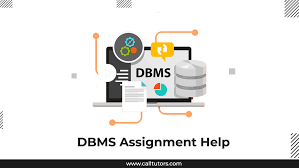Database Management Systems Category Overview
The database management systems category is expected to grow at a CAGR of 12.05% from 2023 to 2030. North America has the biggest category share and APAC is expected to be the fastest growing region during the forecast period. The growing adoption of advanced technologies is fueling the growth of database management systems (DBMS). The database management system market is expanding due to increased demand for cost-effective and adaptable data management solutions, as well as the use of cloud-based technologies. The database management system organization and the DBMS industry forecast have improved as adaptive skills necessitate data-driven enterprises to provide users with unique chances.
The growing demand for low-cost, adaptable data management solutions across sectors drives market expansion. The growing amount of data from e-commerce, social media, and high-tech industries is propelling the database management system worldwide. Because of their better ability to handle unstructured data, new forms of databases such as NoSQL and In-Memory databases are rapidly replacing classic relational DBMS systems. Furthermore, the category is expanding due to the increased usage of distributed, relational, object-centered, structured and network-based database management systems. The category also offers deep learning and operation intelligence technologies to support conventional and enhanced transaction analytical processing.
Order your copy of the Database Management Systems Procurement Intelligence Report, 2023 - 2030 , published by Grand View Research, to get more details regarding day one, quick wins, portfolio analysis, key negotiation strategies of key suppliers, and low-cost/best-cost sourcing analysis
One of the major restrictions is the availability of open-source solutions, which could hinder the growth of the global database management system (DBMS) category. Broken keys and records, as well as data complexity, are some of the factors affecting the DBMS industry. While DBMS providers face challenges such as the need for trained developers, hardware performance issues and unsupportive hardware may have an impact on operations, data storage, or retrieval. Businesses in this category are constantly seeking to overcome such challenges.
The database management systems category is consolidated, with the top ten companies controlling much of the revenue share. Because a system's effectiveness is determined by the supplier’s capacity, resources, promotion, and experience, businesses and organizations tend to rely on larger enterprises that provide a one-stop solution. Consequently, smaller enterprises in the industry find it harder to compete and are increasingly focusing on specific areas. To keep ahead of the competition, major players in the industry are collaborating with other companies. Many businesses are also making investments in fresh offerings to broaden their product offering. Mergers and acquisitions are also important strategies utilized by businesses to extend their product offerings. For instance:
- In July 2023, Oracle confirmed the full release of MySQL HeatWave Lakehouse, that allows clients to query data in object storage at the same speed as querying data inside the database.
- In June 2023, the functionality of migration assessments has been increased by AWS Database Migration Service (AWS DMS). The premigration evaluations can now acquire more extensive details about the source schema and tables to make suggestions on the AWS DMS settings which have to be employed.
- In May 2022, Percona introduced a management system for open-source databases. The firm has enabled other open-source database projects to develop tools to provide management information. The platform could be used to handle MySQL, MongoDB, and PostgreSQL along with other open-source database systems.
Database Management Systems Procurement Intelligence Report Scope
The Database Management Systems category is expected to have pricing growth outlook of 5% - 10% increase (Annually) from 2023 to 2030, with below pricing models.
- Tier-based pricing model,
- pay-per-user pricing model,
- one-time license pricing model
Supplier Selection Scope of Report
- Cost and pricing,
- Past engagements,
- Productivity,
- Geographical presence
Supplier Selection Criteria of Report
- Scalability,
- reputation,
- support offerings,
- security,
- services,
- analytics,
- operational capabilities,
- regulatory standards and mandates,
- category innovations,
- others
Database Management Systems Procurement Intelligence Report Coverage
Grand View Research will cover the following aspects in the report:
- Market Intelligence along with emerging technology and regulatory landscape
- Market estimates and forecasts from 2023 to 2030
- Growth opportunities, trends, and driver analysis
- Supply chain analysis, supplier analysis with supplier ranking and positioning matrix, supplier’s recent developments
- Porter’s 5 forces
- Pricing and cost analysis, price trends, commodity price forecasting, cost structures, pricing model analysis, supply and demand analysis
- Engagement and operating models, KPI, and SLA elements
- LCC/BCC analysis and negotiation strategies
- Peer benchmarking and product analysis
- Market report in PDF, Excel, and PPT and online dashboard versions
Database Management Systems Procurement Cost and Supplier Intelligence
Labor, hardware, power, colocation, and replacement parts are the major cost components to be considered while developing & implementing DBMS. The cost of hardware and labor represent a significant chunk of the total cost accounting to roughly more than 85%. Tiered pricing, pay-per-user pricing, and one-time license are the commonly deployed pricing models in this category. DBMS providers often offer three or more pricing levels, ranging from basic to enterprise or infinite. Higher tiers are frequently associated with higher prices and greater user numbers. If not free, solutions can range from USD 12 per month for a basic set to USD 999 per month at the enterprise level. Pay-per-user alternatives include payment based on groups of users or specified numbers, as well as personal and business levels. Prices start at USD 29 per month and go up to USD 64.95 per user for a commercial license. For enterprise businesses, one-time licensing with fixed payments or monthly installments are popular. Vendors divide expenses into levels comparable to a tiered pricing strategy, however there can be significant cost discrepancies.
When sourcing for a database management system (DBMS), it is important to consider the type of data to be stored, the size and complexity of the data, the number of users who will be accessing the DBMS, the security requirements for the data, the budget available, and the level of support needed. Additionally, the vendor's reputation, the ease of use, and the future of the platform are also important considerations when sourcing for a database management system (DBMS). The vendor's reputation can be assessed by looking at how long they have been in business and their track record for support. The ease of use can be assessed by considering how easy it is to learn and use the DBMS. The future of the platform can be assessed by looking at whether the DBMS is a mature platform with a large user community, and whether the vendor is committed to developing and supporting the platform in the future.
List of key Players
- Aerospike Inc.,
- DataStax, Inc.,
- IBM Corporation,
- InterSystems Corporation,
- MarkLogic Corporation,
- McObject LLC,
- Microsoft Corporation,
- MongoDB, Inc.,
- neo technologies SA,
- Oracle Corporation
Browse through Grand View Research’s collection of procurement intelligence studies:
Nylon Procurement Intelligence Report, 2024 - 2030 (Revenue Forecast, Supplier Ranking & Matrix, Emerging Technologies, Pricing Models, Cost Structure, Engagement & Operating Model, Competitive Landscape)
Mannequins Procurement Intelligence Report, 2023 - 2030 (Revenue Forecast, Supplier Ranking & Matrix, Emerging Technologies, Pricing Models, Cost Structure, Engagement & Operating Model, Competitive Landscape)
Brief about Pipeline by Grand View Research:
A smart and effective supply chain is essential for growth in any organization. Pipeline division at Grand View Research provides detailed insights on every aspect of supply chain, which helps in efficient procurement decisions.
Our services include (not limited to):
- Market Intelligence involving – market size and forecast, growth factors, and driving trends
- Price and Cost Intelligence – pricing models adopted for the category, total cost of ownerships
- Supplier Intelligence – rich insight on supplier landscape, and identifies suppliers who are dominating, emerging, lounging, and specializing
- Sourcing / Procurement Intelligence – best practices followed in the industry, identifying standard KPIs and SLAs, peer analysis, negotiation strategies to be utilized with the suppliers, and best suited countries for sourcing to minimize supply chain disruptions























